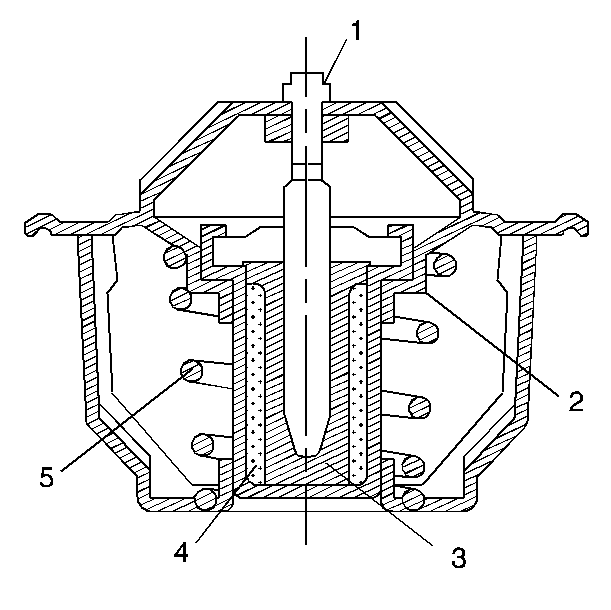The thermostat is a coolant flow control component that utilizes a temperature sensitive wax-pellet element.
The lower end of the thermostat, containing the element, is installed in the engine water jacket.
The thermostat performs the following functions:
| • | Controls the flow of coolant through the radiator |
| • | Enables controlled engine warm-up |
| • | Assists in coolant temperature control |

The wax pellet element (4) in the thermostat expands when heated, and contracts when cooled.
The element connects through a piston (1) to a thermostat valve (2).
When the element is heated, pressure is exerted against a rubber diaphragm (3) which forces the thermostat valve to open. As the element is cooled, the contraction allows a spring (5) to close the thermostat valve.
While the coolant is cold, the thermostat valve remains closed. This prevents circulation of coolant through the radiator. At this point, coolant is only allowed to circulate throughout the engine block and heater core in order to allow the engine to warm quickly.
As the engine warms, the element expands and the thermostat valve opens. This permits coolant to flow through the radiator, where the heat dissipates to the atmosphere.
